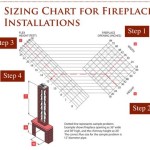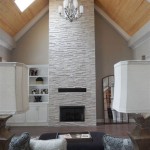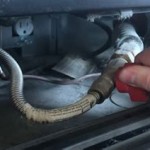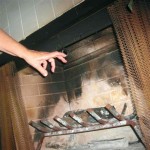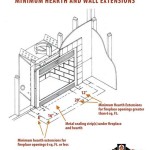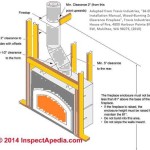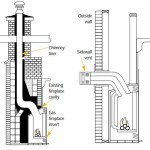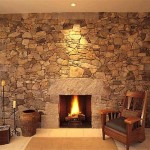Cost of Fireplace Inserts: A Comprehensive Guide
Fireplace inserts are a popular choice for homeowners looking to enhance the efficiency and aesthetics of their existing fireplaces. These self-contained units, which fit directly into an existing firebox, offer a significant upgrade over traditional open fireplaces by providing improved heat output, reduced emissions, and increased safety. However, the cost of fireplace inserts can vary considerably depending on several factors. Understanding these factors is crucial for making an informed decision and selecting the best insert for individual needs and budget.
This article provides a detailed overview of the costs associated with fireplace inserts, encompassing the price of the unit itself, installation expenses, and ongoing operational costs. We will explore the different types of fireplace inserts available, the factors that influence their price, and practical considerations for budgeting and financing this home improvement project.
Factors Influencing the Cost of Fireplace Inserts
The overall cost of a fireplace insert is influenced by a combination of factors, including the type of fuel used, the size and heating capacity of the unit, the features it offers, and the complexity of the installation process. A thorough understanding of these variables is essential for accurately estimating the total expense.
Fuel Type: Fireplace inserts are available in various fuel types, each with its own price point. The most common types include wood, gas (propane or natural gas), and electric. Wood-burning inserts typically offer the most traditional ambiance but generally require more maintenance and are subject to local regulations regarding emissions. Gas inserts provide convenience and ease of use, with options for remote control operation and thermostat settings, but require a gas line connection. Electric inserts are the simplest to install and operate, offering a clean and maintenance-free option, but they may not provide the same level of heat output as other types.
The cost of the insert itself is heavily influenced by the fuel type. Electric inserts are generally the least expensive, followed by gas inserts, and then wood-burning inserts. However, it's important to consider the long-term cost of fuel as well. Wood can be a cost-effective fuel source if it is readily available and inexpensive, but it requires storage and handling. Natural gas is often a relatively affordable option, while propane prices can fluctuate significantly. Electricity costs can vary widely depending on local rates and usage patterns.
Size and Heating Capacity: The size of the fireplace insert and its heating capacity, measured in British Thermal Units (BTUs), directly impact its price. Larger inserts with higher BTU ratings are capable of heating larger spaces and, therefore, command a higher price. When selecting a fireplace insert, it's crucial to choose a size that is appropriate for the room or area you intend to heat. An oversized insert may produce excessive heat and waste energy, while an undersized insert may not adequately heat the space.
To determine the appropriate size, consider the square footage of the area to be heated, the insulation level of the home, and the climate. A general rule of thumb is to use BTU ratings as a guide, with higher BTU ratings required for larger spaces or homes with poor insulation. Consulting with a qualified professional can help you accurately assess your heating needs and select the appropriate insert size.
Features and Aesthetics: The features and aesthetics of a fireplace insert can also influence its price. Inserts with advanced features such as variable speed blowers, remote controls, thermostat settings, and decorative log sets tend to be more expensive than basic models. The aesthetic design of the insert, including the finish, style, and trim, can also affect the price. Inserts with elaborate designs or custom finishes typically carry a higher price tag.
Consider the importance of these features and aesthetics to your overall satisfaction with the fireplace insert. If convenience and sophisticated design are priorities, investing in a higher-end model may be worthwhile. However, if your primary concern is efficient heating at a reasonable cost, a simpler model may suffice.
Installation Complexity: The complexity of the installation process is a significant factor in the overall cost of a fireplace insert. Installation costs can vary widely depending on the type of insert, the existing fireplace structure, and the local building codes.
Wood-burning inserts typically require the most complex installation, including the installation of a stainless steel liner in the existing chimney to ensure proper venting and safety. Gas inserts require a gas line connection, which may involve running new gas lines and obtaining permits. Electric inserts are the simplest to install, often requiring only a standard electrical outlet. The existing fireplace may need to be modified to accommodate the insert, which can add to the installation costs. This may involve resizing the firebox opening, reinforcing the hearth, or making structural repairs.
It is highly recommended to hire a qualified and licensed professional to install a fireplace insert. This ensures that the installation is done correctly and safely, and that the insert meets all local building codes. Obtain multiple quotes from different contractors to compare prices and services. Be sure to inquire about any additional costs that may be incurred, such as permits, inspections, or modifications to the existing fireplace.
Breaking Down the Cost Components
To effectively budget for a fireplace insert, it is helpful to break down the overall cost into its individual components. These components typically include the cost of the insert itself, installation expenses, permits and inspections, and ancillary supplies and materials.
Insert Unit Cost: As previously discussed, the cost of the insert unit is primarily determined by the fuel type, size, and features. Entry-level electric inserts can cost as little as a few hundred dollars, while high-end wood-burning inserts with advanced features can cost several thousand dollars. Gas inserts typically fall somewhere in between. Research different brands and models to compare prices and features before making a decision. Online retailers, home improvement stores, and specialty fireplace dealers are all potential sources for purchasing fireplace inserts.
Installation Costs: Installation costs can vary significantly depending on the complexity of the installation process and the labor rates in your area. A simple electric insert installation may cost only a few hundred dollars, while a more complex wood-burning insert installation can cost several thousand dollars. Factors that can increase installation costs include the need for chimney lining, gas line installation, modifications to the existing fireplace, and permits and inspections. Always obtain multiple quotes from qualified contractors to ensure you are getting a fair price. Be sure to ask for a detailed breakdown of the installation costs, including labor, materials, and permits.
Permits and Inspections: Most jurisdictions require permits and inspections for the installation of fireplace inserts, particularly for wood-burning and gas inserts. The cost of permits and inspections can vary depending on the local building codes and the type of insert. These fees are typically a relatively small percentage of the overall cost, but they are essential for ensuring that the installation meets safety standards and complies with local regulations. Failing to obtain the necessary permits can result in fines or the need to redo the installation.
Ancillary Supplies and Materials: In addition to the cost of the insert and installation, there may be additional costs for ancillary supplies and materials. These may include chimney cleaning, fireplace tools, fire starters, firewood storage racks, or decorative accessories. These costs can vary depending on individual preferences and needs. Plan for these potential expenses when budgeting for a fireplace insert.
Long-Term Cost Considerations
While the initial cost of a fireplace insert is an important consideration, it's also essential to factor in the long-term operational costs. These costs include fuel expenses, maintenance, and potential repairs. Understanding these ongoing expenses can help you make a more informed decision and avoid unexpected costs down the road.
Fuel Costs: Fuel costs will vary depending on the type of insert and the local prices for wood, gas, or electricity. Wood-burning inserts require a consistent supply of firewood, which can be purchased or obtained through personal efforts. Gas inserts require a connection to a natural gas line or a propane tank, with ongoing costs for gas consumption. Electric inserts consume electricity, with costs dependent on local electricity rates and usage patterns. Compare the long-term fuel costs of different types of inserts before making a decision. Consider the efficiency of the insert and its BTU output relative to its fuel consumption.
Maintenance: All types of fireplace inserts require some level of maintenance to ensure optimal performance and safety. Wood-burning inserts require regular cleaning of the chimney to remove creosote buildup, which can pose a fire hazard. Gas inserts require periodic inspections and cleaning of the burner and venting system. Electric inserts typically require minimal maintenance, but may need occasional cleaning of the heating element. Budget for regular maintenance to prevent problems and extend the lifespan of the insert. Consider the cost of professional chimney cleaning or gas insert servicing when estimating long-term costs.
Repairs: While fireplace inserts are generally reliable, they may require repairs over time. The cost of repairs can vary depending on the type of insert and the nature of the problem. Common repairs include replacing worn-out parts, repairing gas leaks, or fixing electrical issues. Regular maintenance can help prevent costly repairs, but it's wise to set aside a contingency fund for unexpected repairs. Consider purchasing an extended warranty to cover potential repair costs.
By carefully considering the factors that influence the cost of fireplace inserts, and by breaking down the overall cost into its individual components, homeowners can make informed decisions and select the best insert for their needs and budget. Furthermore, factoring in the long-term operational costs will provide a comprehensive understanding of the total cost of ownership.

Estimated Page Fireplaces Stoves Inserts Wood Gas Pellet

Gas Fireplace Insert Cost Forbes Home

Estimated Page Fireplaces Stoves Inserts Wood Gas Pellet

How Much Does A Gas Fireplace Cost Fireplaces Direct Learning Center

Gas Fireplace Inserts Pros And Cons Of Ventless Fireplaces
.aspx?strip=all)
Cost Of Operating A Wood Insert Cord Calculator Regency

How Much Does A Fireplace Insert Cost

Estimated Page Fireplaces Stoves Inserts Wood Gas Pellet

T25i Timberwolf Wood Fireplace Insert Hearth Stove Patio

How Much Does A Fireplace Insert Cost 2024 Data Angi
Related Posts

